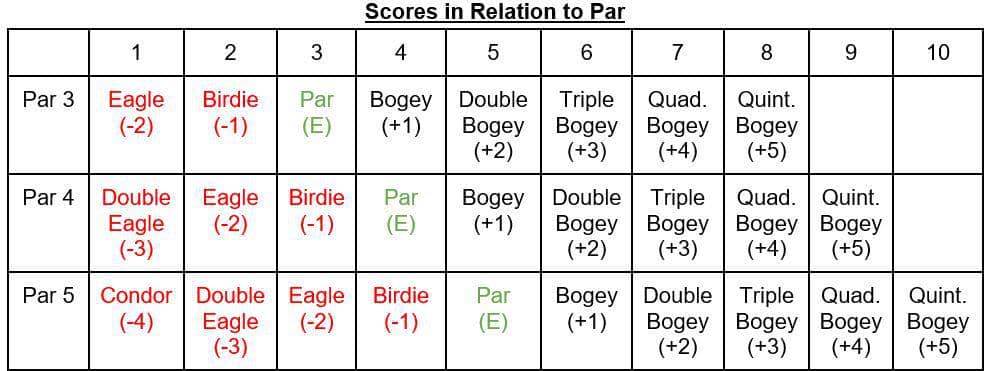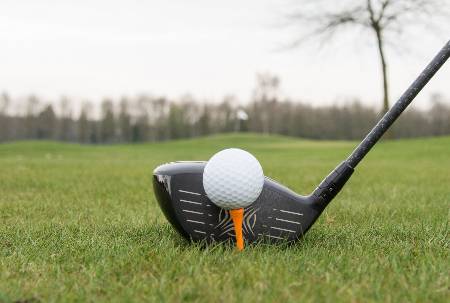
In the grand pecking order of scoring terms in the golf world, the condor reigns supreme. The chances of a golfer recording a condor on their scorecard are so rare that it is more likely they’ll get struck by lightning or even better, win the lottery.
So, what is a condor in golf?
A condor is a term for a golf score that is 4 under par. There are only two instances in which a golfer can record a condor during their round: a hole in one on a par 5 or a 2 on a par 6.
The biggest reason why condors are so rare in golf is that the distance to reach the hole from the teeing ground on a par 5 hole or the green in two shots on a par 6 hole is just too far for the average golfer. With par 5 distances averaging around 500 yards, the average golfer, one who typically scores between 90 to 100 per round, simply cannot hit the ball that far with one swing.
How Rare Is a Condor in Golf?
Scoring a condor in golf is one of the rarest feats any golfer can make in their golfing lives. Bookmakers don’t even offer odds of a condor happening because the number is so astronomically high. It is more likely that a golfer will be struck by lightning or attacked by a shark.
While the chances of scoring a condor are out of reach for nearly every golfer in the world, here are some scores that offer much better odds for the general golfing public:
- Hole-in-One –
- By a PGA TOUR professional golfer – 3,000 to 1.
- By a low-handicap golfer – 5,000 to 1.
- Two players in the same group on the same hole – 17 million to 1.
- One golfer making two hole-in-ones in the same round – 67 million to 1.
- Albatross – golf experts put the odds at recording an albatross at around 1 million to 1.
Recorded Condors in Golf

Incredibly, six golfers have recorded a condor in golf history with the most recent occurring in 2020:
- Larry Bruce – 480-yard par 5, 5th hole at Hope Country Club in Hope, Arkansas in 1962.
- Dick Hogan – 456-yard par 5, 8th hole at Piedmont Crescent Golf Course in Burlington, North Carolina in 1973.
- Shaun Lynch – 496-yard par 5, 17th hole at Teign Valley Golf Club in Christow, England in 1995.
- Mike Crean – 517-yard par 5, 9th hole at Green Valley Ranch Golf Club in Denver, Colorado in 2002.
- Jack Bartlett – 513-yard par 5, 17th hole at Royal Wentworth Falls Country Club, New South Wales, Australia in 2007.
- Kevin Pon – 667-yard par 6, 18th hole at Lake Chabot Golf Course in Oakland, California in 2020.
Should Golfers Try to Make a Condor Every Time?
No, it is not reasonable for a golfer to try and make a condor every time they play a par 5 or par 6. For every recorded condor listed above, each golfer received assistance from outside factors and was playing golf in conditions ideal to score such an elusive score.
Here are a few reasons why it doesn’t make sense for golfers to try for a condor each time they play a par 5 or par 6:
- Physical Injury – The golf swing requires the golfer to twist and untwist their body around their spine to build up enough torque and clubhead speed to hit the ball far enough to either get the ball on the green and in the hole on a par 5 or close enough to hole out on a second shot on a par 6. Given the fragility of the spine and surrounding muscles designed to protect it, a golfer risks really hurting themselves by over swinging.
- The Hole is Too Long – Par 5’s and 6’s are generally over 500 and 600 yards, respectively, and according to the USGA’s course rating system the average male golfer only hits the ball about 200 yards off the tee. Even PGA TOUR professional golfers would struggle to hit the ball on the green on a par 5. During the 2019-20 season, professional golfer Bryson DeChambeau led the PGA TOUR with a driving distance average of 322.1 yards.
What Factors Determine a Golfer’s Ability to Make a Condor?
It’s reasonable for a golfer to attempt to record a condor if the external conditions are right combined with the golfer’s ability to hit the ball far with accuracy. Let’s review some of the factors:
- Luck – The first thing a golfer needs to score a condor is luck, which is represented in several of the following factors working together for the benefit of the golfer.
- Elements of Nature – The following factors are vital to recording a condor:
- Wind – hitting a ball downwind will help the ball both fly and roll farther.
- Ground firmness – playing golf on firmer ground in desert or mountainous conditions will also cause the ball to bounce or roll farther.
- Trees – favorably bounces off these impermeable objects are gladly welcomed but results are random and don’t always work out in the golfer’s favor.
- Rocks and Boulders – similar to trees, results are random but sometimes golfers get lucky with bounces.
- Man-made Obstacles – Scuff mark or not, bounces off concrete cart paths will provide the golf ball with the extra boost needed to reach a par 5 green in one shot or a par 6 green in two. Additional obstacles that might add yardage to a tee shot (though it is never recommended one try to hit these obstacles) include golf carts, drain covers and the occasional sprinkler head.
- Hole Elevation Change – Extreme downhill elevation changes (50 feet or more) on a golf hole may provide the perfect opportunity to give it a go to make a condor.
- Elevation Above Sea Level – Higher elevation will cause the ball to travel further because the air is less dense. Expect at least 6% more distance on tee shots when playing golf at 5,000 ft.
- The direction of the Shot – The shortest distance between two points is a straight line. Strategy sometimes calls for cutting corners and that includes doglegs (bends left or right on a golf hole that forces a golfer to navigate the hole by hitting consecutive shots that create a 45-90 degree angle). Many professional golfers will take angles that go through and sometimes over trees, lakes, valleys, and hills effectively decreasing the length of the hole.
Condor vs Albatross in Golf

A condor and an albatross are the two most elusive scores in golf, yet that is the only thing they have in common. A condor is a score equaling 4 under par and can only be recorded when a golfer scores a 1 on a par 5 or a 2 on a par 6.
However, an albatross is a score equaling 3 under par and is recorded when a golfer records a 1 on a par 4, a 2 on a par 5 or a 3 on a par 6.
Condor vs Hole-in-One
A condor is considered a hole in one when a golfer knocks the ball in the hole with one shot on a par 5. However, not all hole-in-ones are condors. Most hole-in-ones occur on par 3 holes where it’s just not possible to record a condor. The second most popular hole-in-one is an albatross on a par 4.
Other Scoring Terms in Golf
Now that you know what a condor in golf is, let’s look at other scoring terms in golf. Here they are listed from lowest under par to highest above par:
- Condor – A score of 4-under par, occurring as an ace or hole in one on a par 5 or a score of 2 on a par 6.
- Albatross or Double Eagle – A score of 3-under par, occurring as a hole in one on a par 4, a 2 on a par 5 or a 3 on a par 6.
- Eagle – A score of 2-under par. An example is a score of 3 on a par 5, also known as a hole in one on a par 3.
- Birdie – A birdie is a score of 1-under par, such as a score of 3 on a par 4.
- Par – A par is a score equal to the number of strokes designated on the hole, i.e. a score of 3 on par 3.
- Bogey – A bogey is a score of 1-over par.
- Double Bogey – A score of 2-over par or a 7 on a par 5, for instance.
- Triple, Quadruple, or Quintuple Bogey – As the names imply, these are scores of 3, 4, and 5-over par respectively.
Here is a chart that visually correlates scores with their names for each type of hole par.

Why Are Scoring Terms in Golf Named After Birds?
The first use of a score in golf referencing a ‘bird’ occurred in the early 20th century when at the time, the term ‘bird’ was used to refer to anything excellent. Legend holds that three men, Ab Smith, his brother William P. Smith and golf course architect and hotelier George A. Crump, were playing golf at Atlantic City Club when Ab Smith first used the term in such a way to describe a golf shot.
On the par 4, 2nd hole at Atlantic City Club, Ab hit his second shot within inches of the hole and exclaimed ‘That was a bird of a shot!’. After making the putt, the group henceforth referred to a score of the type as a ‘birdie’.
Several years later in 1913, ‘birdie’ made its way across the Atlantic Ocean and joined the golf vernacular when English golf writer Bernard Darwin wrote, “It takes a day or two for the English onlooker to understand that… a ‘birdie’ is a hole done in a stroke under par.” Ab Smith is also credited with coining the scoring terms ‘eagle’ and ‘double eagle’.
It was the Brits that later used the term ‘albatross’ in place of ‘double eagle’. The bird theme in golf follows the logic that as the score in golf gets lower, the representative bird gets bigger.
